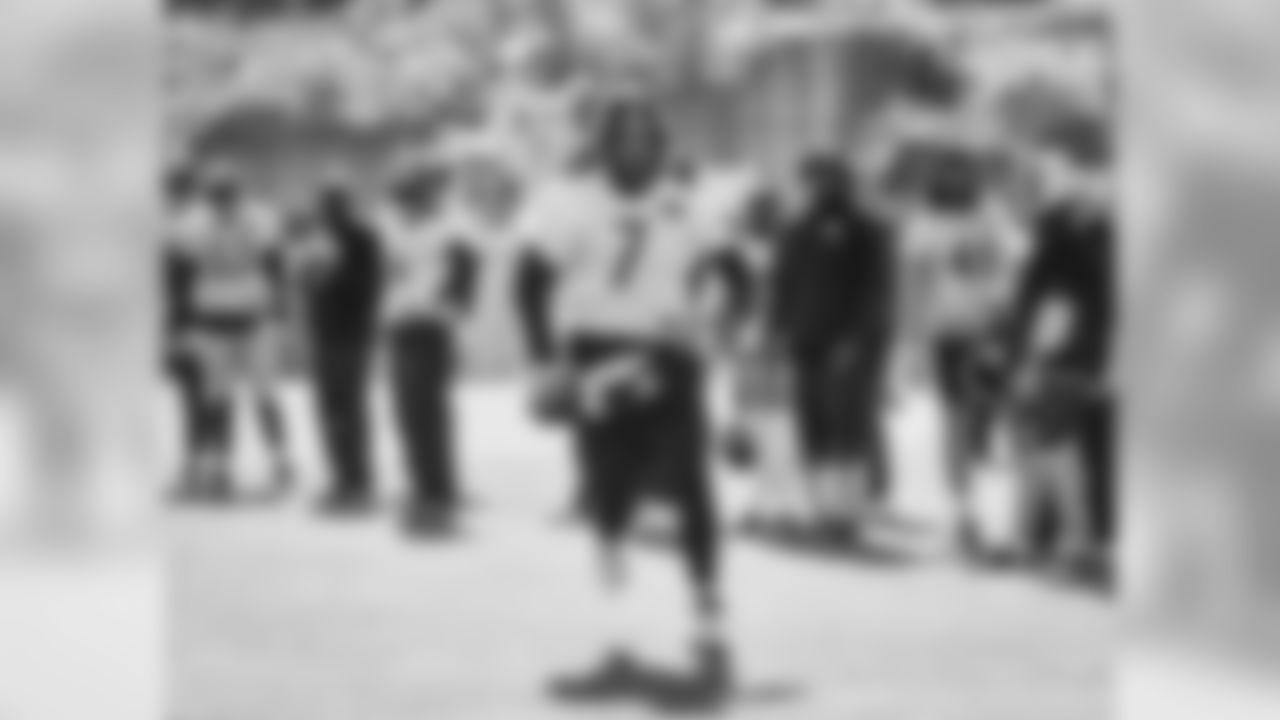Ready or not, here it comes:
- The Steelers have received many accolades for their success on the field, for being the franchise with the most wins and most championships since the time the sport started ending each season with the game that has come to be called the Super Bowl. That level of team success has trickled down to many individual honors for people working in various levels of the organization, with one notable exception.
- Upper management is represented in the Pro Football Hall of Fame by Art Rooney Sr. and his oldest son, Dan Rooney. At the coaching level, Chuck Noll was elected to the Hall of Fame as soon as he was eligible, just one year after retiring after 23 seasons as the Steelers coach with a 4-0 record in Super Bowls. There are nine players from the 1970s Team of the Decade enshrined in Canton, as is Jerome Bettis, who was a critical component of the Steelers' Super Bowl XL team.
- In all, there are 13 Steelers players from the Super Bowl era who have been elected to the Hall of Fame, and there is an oft-repeated theory that more are deserving but may never make it because the Board of Selectors has grown weary of voting for Steelers. That is speculation, and maybe at some point in the future those who are deserving gain admission via the Seniors Committee.
- One of the unique historical oddities of the franchise's success during the 1970s is that in 1979 the Steelers became the first Super Bowl champion to win a Lombardi Trophy with a roster completely stocked with homegrown players. Not one of the players on the roster that helped the team win Super Bowl XIV ever had played for another NFL franchise, and now that the league has entered an era of free agency tied to a salary cap, that distinction might never be repeated.
- For a franchise that has relied on the draft as its primary method of roster-building for going on 50 years, and to have those teams win more games and more championships over that span than any other franchise in the NFL leads one to the obvious conclusion that there has been some consistently high-level scouting and drafting going on within the Steelers offices for a long, long time.
- It's about time that wing of the organization enjoys some of the same recognition that has been afforded to the others.
- Scouting, often referred to by the sexier term "player personnel," long has been under-appreciated when it comes to things such as recognition in Halls of Fame, and maybe that's because the profession is such an inexact science, where even the best in the business will make huge mistakes that can negatively impact a team for years.
- Also, there is an anonymity factor involved in that end of the business, because it's usually the team, or the guy picking for the team, who gets credit for, say, the decision to select Antonio Brown on the sixth round of the 2010 NFL Draft. But at some point during the process, there was a scout or scouts who went to Central Michigan and talked to his coaches, learned his story, and wrote the reports that got the process underway that ended with the Steelers picking him.
The Steelers prepare for the Week 10 matchup against the Indianapolis Colts.





























- Maybe that needs to change, and maybe it will make some progress toward changing with the addition of at least one contributor candidate to each year's group of finalists for election into the Pro Football Hall of Fame. And when the committee charged with presenting a contributor candidate gets around to scouting departments, the Steelers have some men worthy of consideration.
- Using the photo that led you into this story, from left to right, those men are Bill Nunn, Art Rooney Jr., Jack Butler, and Dick Haley. Their work served as the foundation for the metamorphosis of the Steelers franchise from one of the league's losing-est to what it is today, and many of the principles developed by those people a generation ago still are utilized as a basis for identifying college talent today.
- Nunn is famous for opening the NFL pipeline to the Historically Black Colleges and Universities, and his story was told in Andrew Conte's book, "The Color of Sundays." Butler is enshrined in Canton, but for his work as a Steelers defensive back during the dark ages of franchise history, and not for how he guided the BLESTO Scouting Combine for 46 years (44 as its director), during which time he oversaw the evaluation of over 75,000 college athletes along with the birth of the Combine scouting process that is still in use today.
- Like Butler, Haley was an NFL defensive back, and while he had stints with the Washington Redskins and Minnesota Vikings, he spent the bulk of his playing career with the Steelers. During his final season as a player, Haley was injured and so the Steelers put him to work as a part-time scout, which put him on Butler's radar, which eventually brought him back to the Steelers where he became their Director of Player Personnel in the early 1970s. Which, by the way, was nothing but a fancy name for a scout.
- The other guy was the owner's son, but it would be a mistake to allow that biological fact to minimize his contributions to the family business. Because when it came to the Steelers scouting department, Art Rooney Jr. organized it all, made sure all of the colleges were covered, made sure his guys cultivated relationships with the coaches at those colleges to allow the Steelers access to a lot of the "real" information instead of just the stuff anybody could read by buying the latest edition of "Street and Smith's."
- A few weeks ago, on Oct. 28, Art Rooney Jr. was inducted into the Pennsylvania Sports Hall of Fame, and if that sounds like some second-rate, backhanded recognition, understand that the inaugural class in 1963 included Chuck Bednarik, Connie Mack, Stan Musial, Arnold Palmer, Jim Thorpe, and Harold "Pie" Traynor.
- In 2010, Nunn was a member of the inaugural class of the Black College Football Hall of Fame, and he was enshrined along with Deacon Jones, Eddie Robinson, Walter Payton, Willie Lanier, Buck Buchanan, Tank Younger, and Jerry Rice.
- If and when Canton gets around to the under-recognized area of player personnel guys as candidates for induction, there are some worthy ones from Pittsburgh who helped build the greatest dynasty in NFL history.














